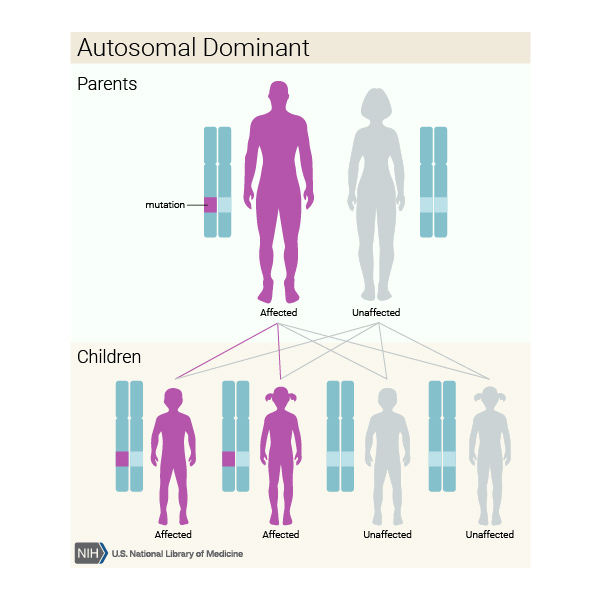To understand the genetics of Huntington’s disease (HD), it helps to start with some basic genetics.
Your whole body is made up of cells (hair cells, skin cells, etc.). Inside each of your cells is your DNA, or the genetic material, that tells your body how to grow and develop. Your DNA is written out in individuals instruction books, called genes, and your genes make proteins that create and determine every aspect of your body, from the chemicals that help you digest your food, to your hair color, skin color, and whether or not you will develop HD.
Everyone has a specific piece of DNA that makes up the HD gene. This segment of DNA repeats in units of three, and is called a CAG trinucleotide repeat. Tri means three, and nucleotides are the building blocks of DNA. People who have inherited the gene change or mutation that causes HD have a CAG trinucleotide that repeats too many times. People who have CAG repeats in the normal range have not inherited HD.
Inheritance
Huntington disease is inherited in an autosomal dominant pattern. This means a person with HD has a 50:50 chance to pass the genetic change or mutation that causes HD to each son or daughter. A person who has not inherited this genetic change will not develop HD and cannot pass HD on to a child.

Visit our Genetic Counseling & Testing page to learn more.
Adapted from a handout by: Robin Bennett, MS, CGC, PhD Hon